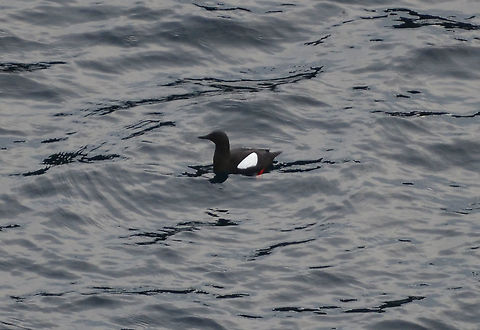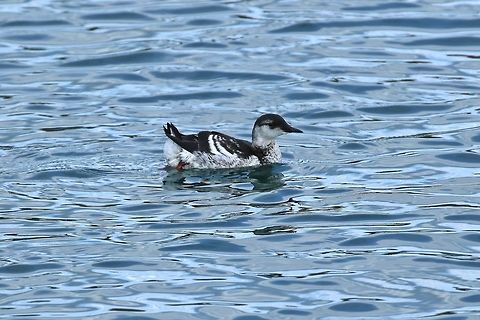
Appearance
Adult birds have black bodies with a white wing patch, a thin dark bill, and red legs and feet. They show white wing linings in flight. In winter, the upperparts are pale grey and the underparts are white. The wings remain black with the large white patch on the inner wing. They are 32–38 cm in length, and with a 49–58 cm wingspan.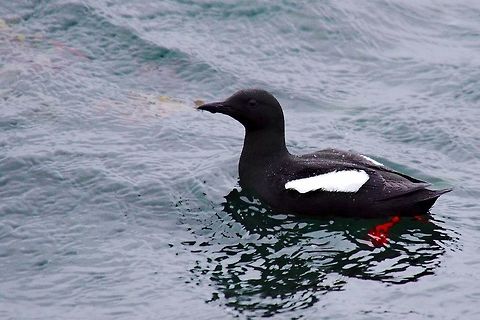
Naming
There are five listed subspecies of the black guillemot:⤷ "C. g. mandtii" – : northeast Canada to Svalbard to northern Siberia & northern Alaska.
⤷ "C. g. arcticus" – : northeast USA, southeast Canada & south Greenland to the British Isles, southern Scandinavia & the White Sea.
⤷ "C. g. islandicus" – : Iceland.
⤷ "C. g. faroeensis" – : Faroe Islands.
⤷ "C. g. grylle" – : Baltic Sea.
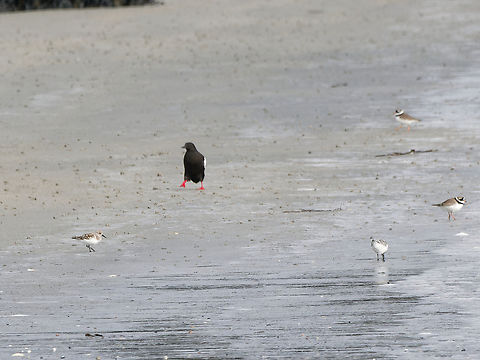
Habitat
These birds often overwinter in their breeding areas, moving to open waters if necessary, but usually not migrating very far south.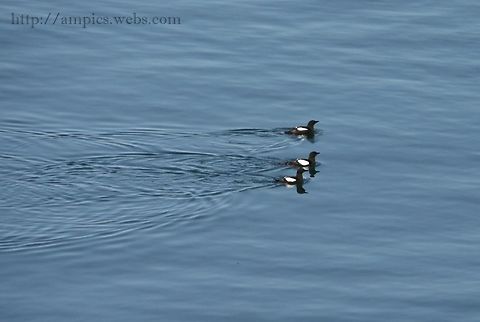
Food
They dive for food from the surface, swimming underwater. They mainly eat fish and crustaceans, also some mollusks, insects and plant material.References:
Some text fragments are auto parsed from Wikipedia.
